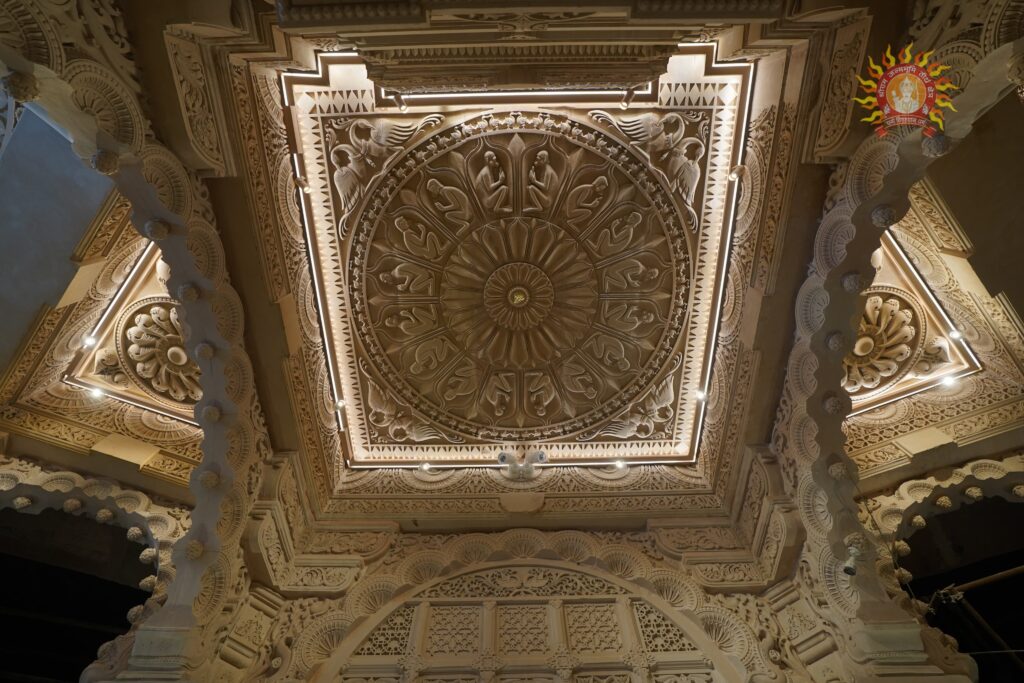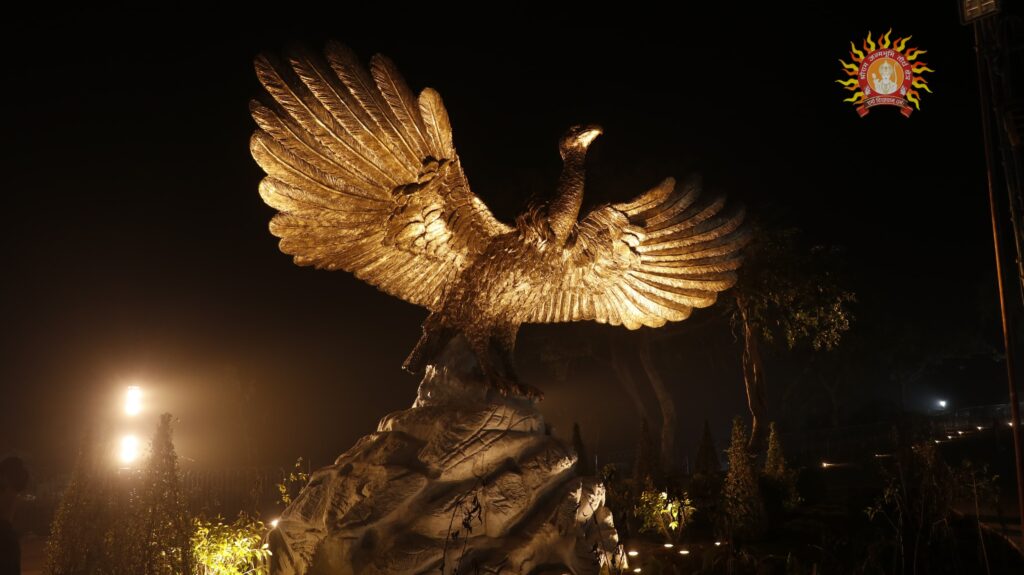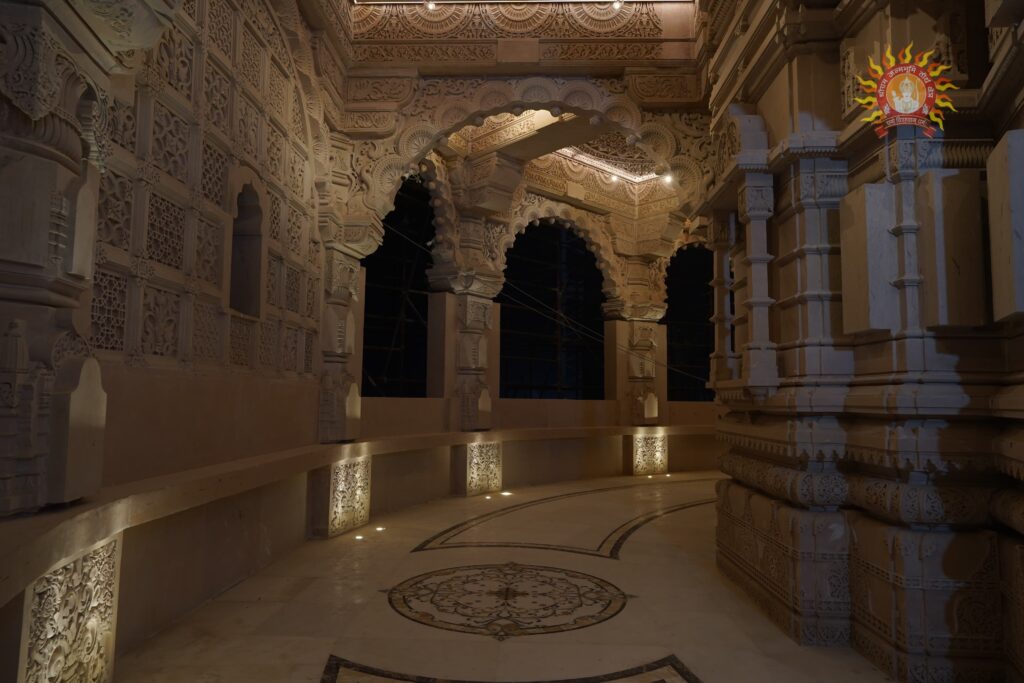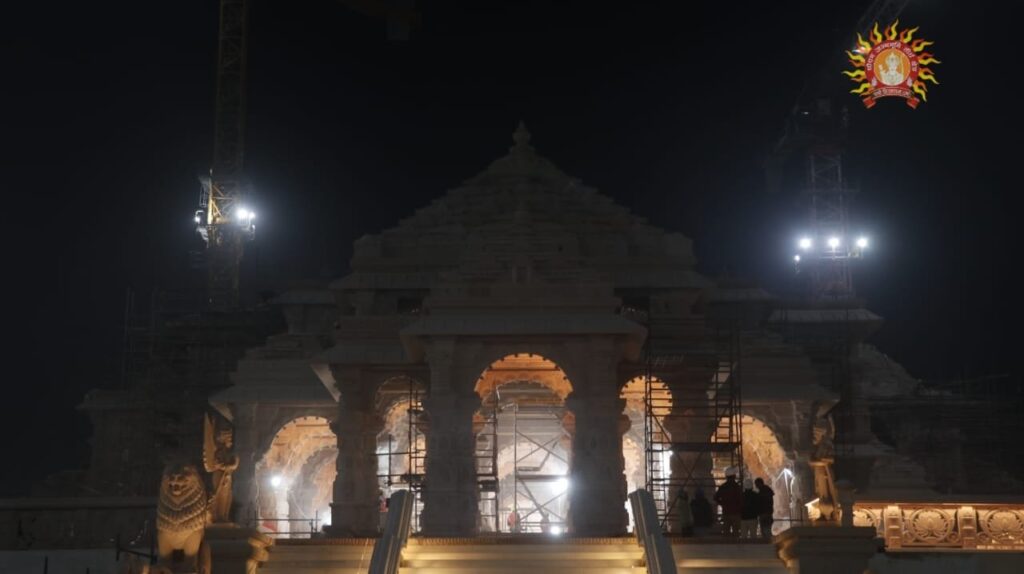The Shri Ram Janmabhoomi Teerth Kshetra, a trust established to oversee the construction and management of the Shri Ram Janmabhoomi Mandir in Ayodhya, Uttar Pradesh, has recently released photographs of the Ram Temple taken at night.
These images showcase the sculpture of Jatayu, the entrance to the temple, and glimpses from inside the sacred structure. Jatayu holds great significance in the Hindu epic Ramayana, as it valiantly sacrificed its life while attempting to rescue Sita from the clutches of the demon king Ravana.

Preparations for the grand inauguration of the Ram Mandir and the consecration ceremony, scheduled for January 22, are currently in their final stages. Vedic scholars will conduct the consecration ceremony at the Shri Ram Janmabhoomi Mandir.
On January 22, Lord Rama will be ceremoniously seated in the sanctum sanctorum of the temple between 12:15 pm and 12:45 pm. Presently, the main sanctum sanctorum houses the idol of Shri Ram Lalla, depicting Lord Rama in his childhood form. Additionally, the first floor of the temple complex will feature the divine assembly of Shri Ram Darbar.

The Shri Ram Janmabhoomi Mandir has been constructed in the traditional Nagara architectural style. It spans a length of 380 feet, a width of 250 feet, and a height of 161 feet. The Mandir consists of three floors, each measuring 20 feet in height. Additionally, it boasts a total of 392 pillars and 44 doors, along with 5 mandapas or halls.
These halls, namely Nritya Mandap, Rang Mandap, Sabha Mandap, Prarthna, and Kirtan Mandap, have been designated by the trust. Surrounding the Mandir is a rectangular compound wall, which stretches for 732 meters in length and 14 feet in width.

At the four corners of the temple’s compound, there are four temples dedicated to Surya Dev, Devi Bhagwati, Ganesh Bhagwan, and Bhagwan Shiv. Furthermore, there is a temple devoted to Mata Annapurna on the northern side and a temple dedicated to Lord Hanumana on the southern side. Notably, the construction of the temple strictly avoids the use of iron.
Access to the temple is granted through the Singh Dwar on the eastern side, and provisions have been made for ramps and lifts to accommodate the elderly and differently-abled individuals. Additionally, the Mandir complex will include a separate block with bathing facilities, washrooms, wash basins, and open taps, among other amenities.


